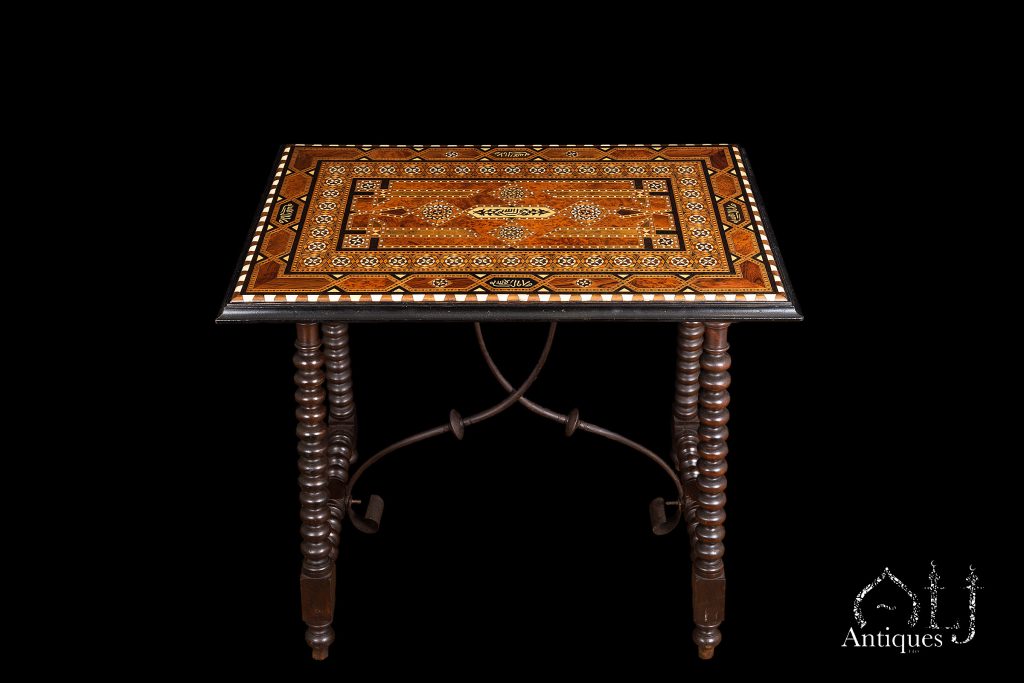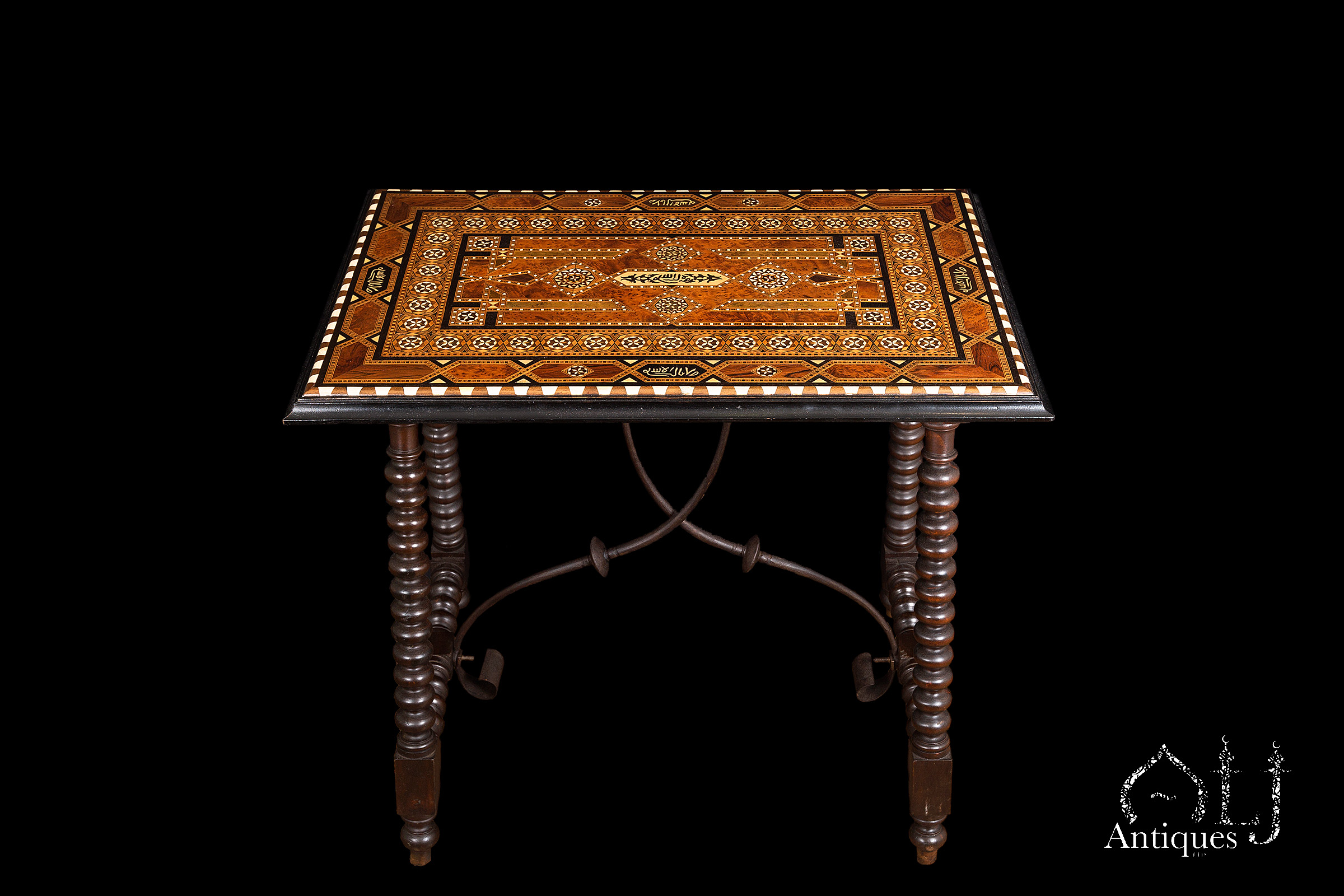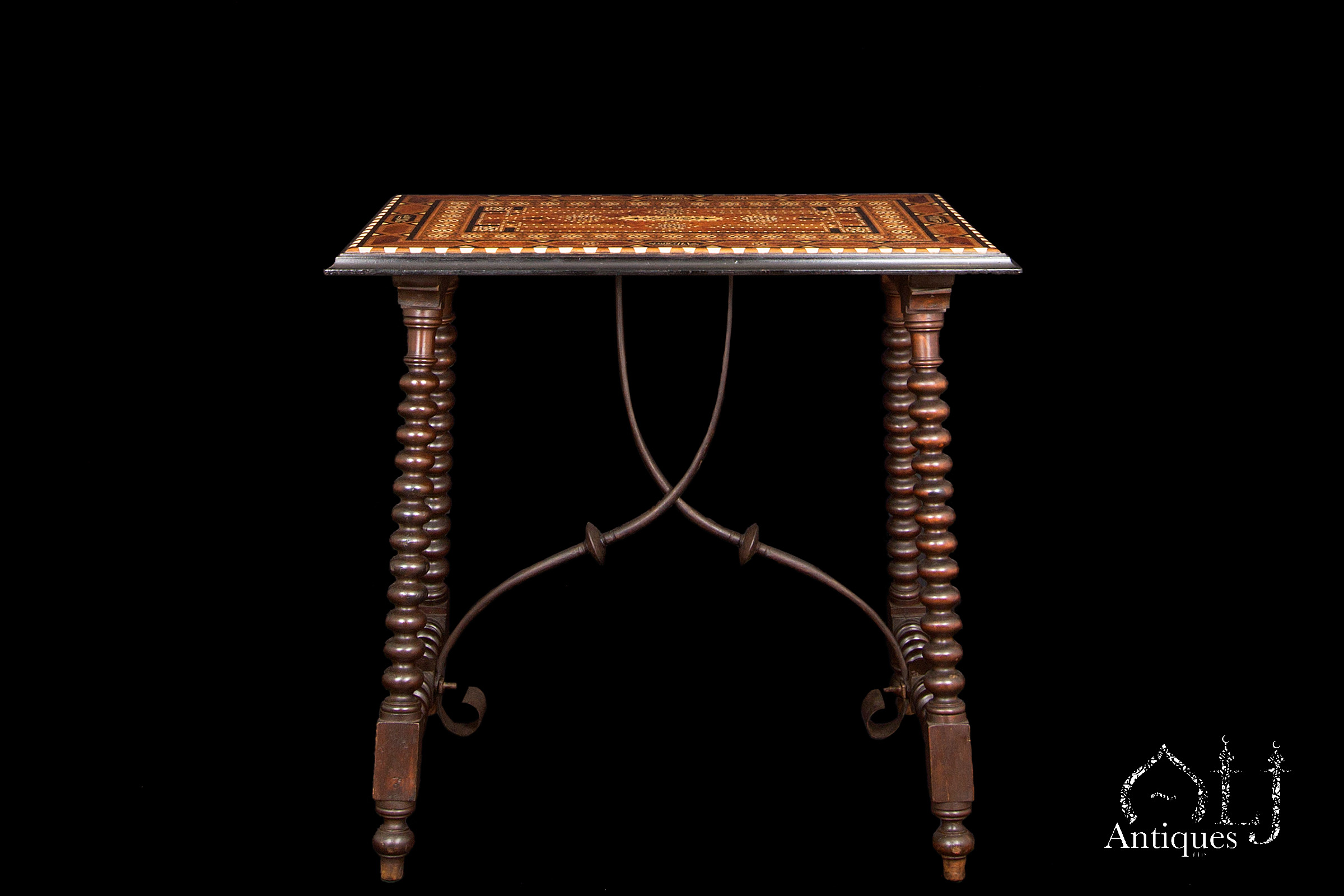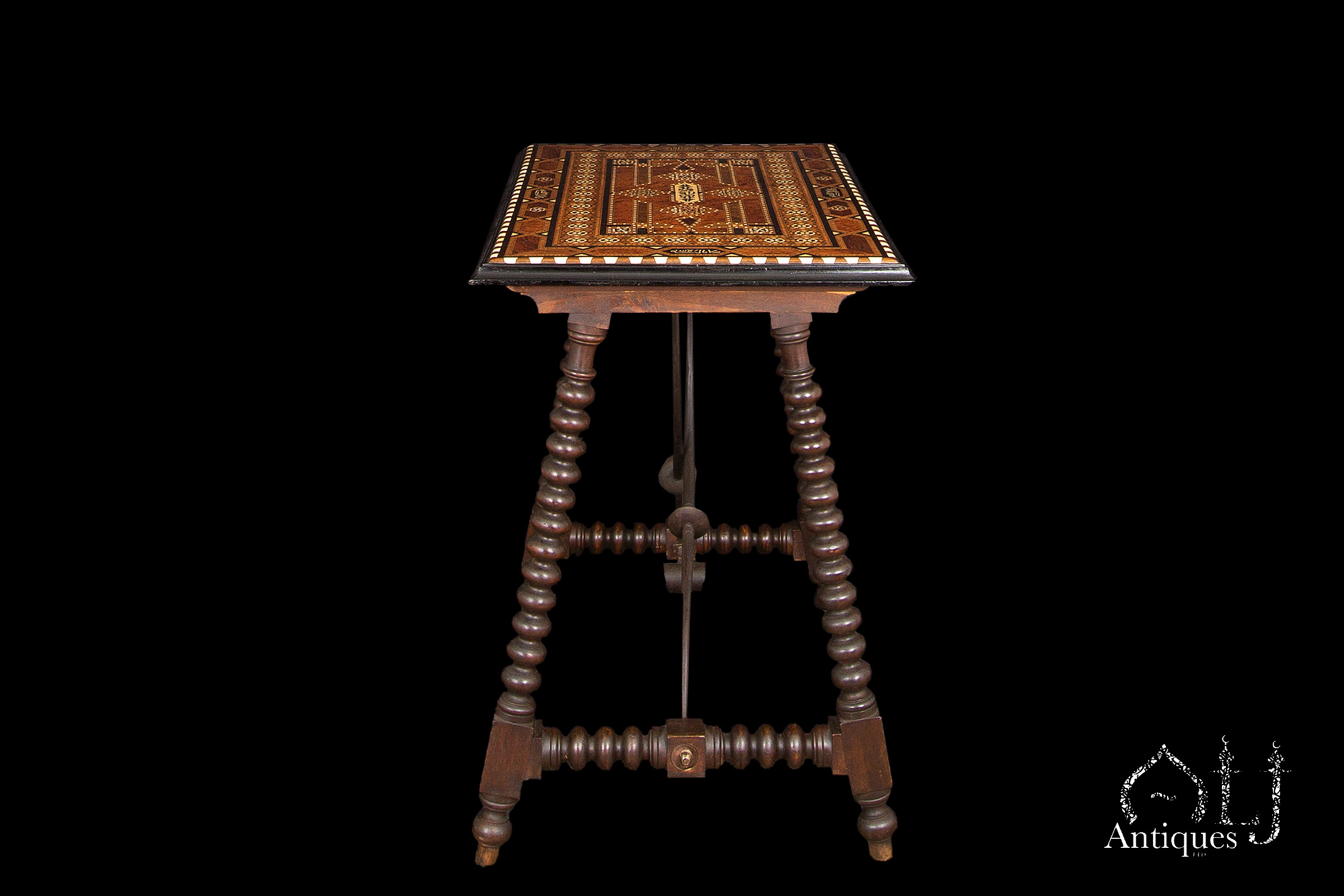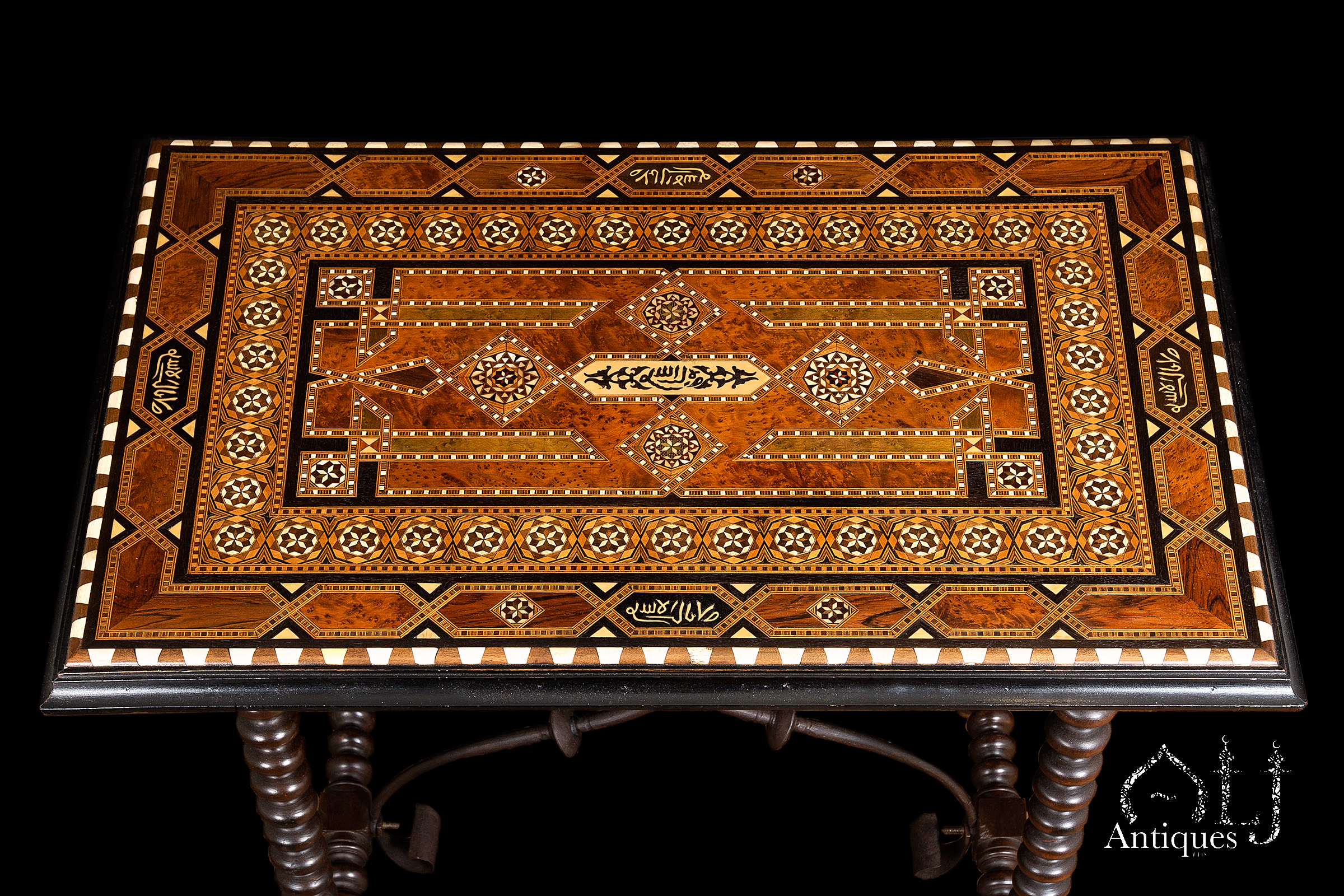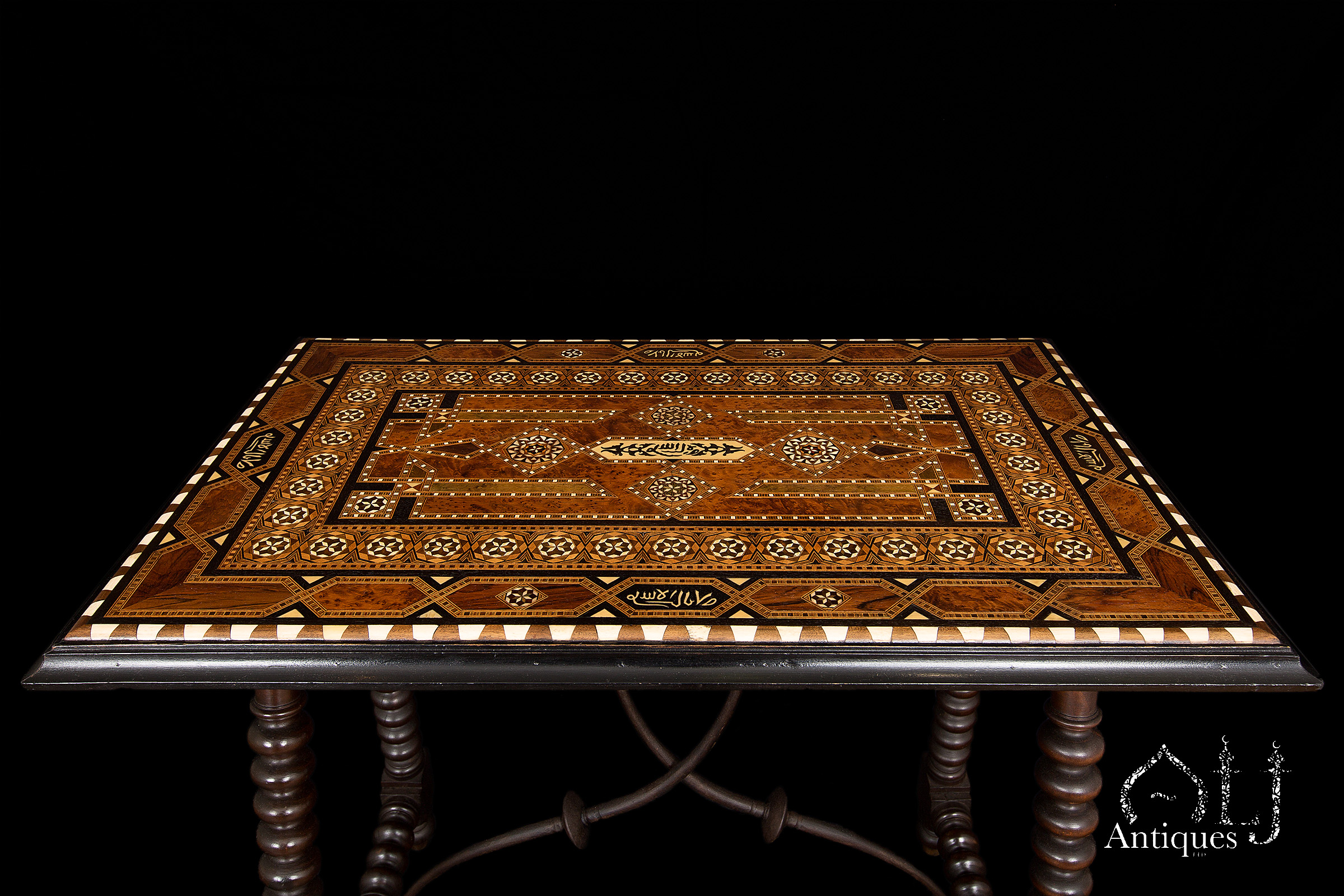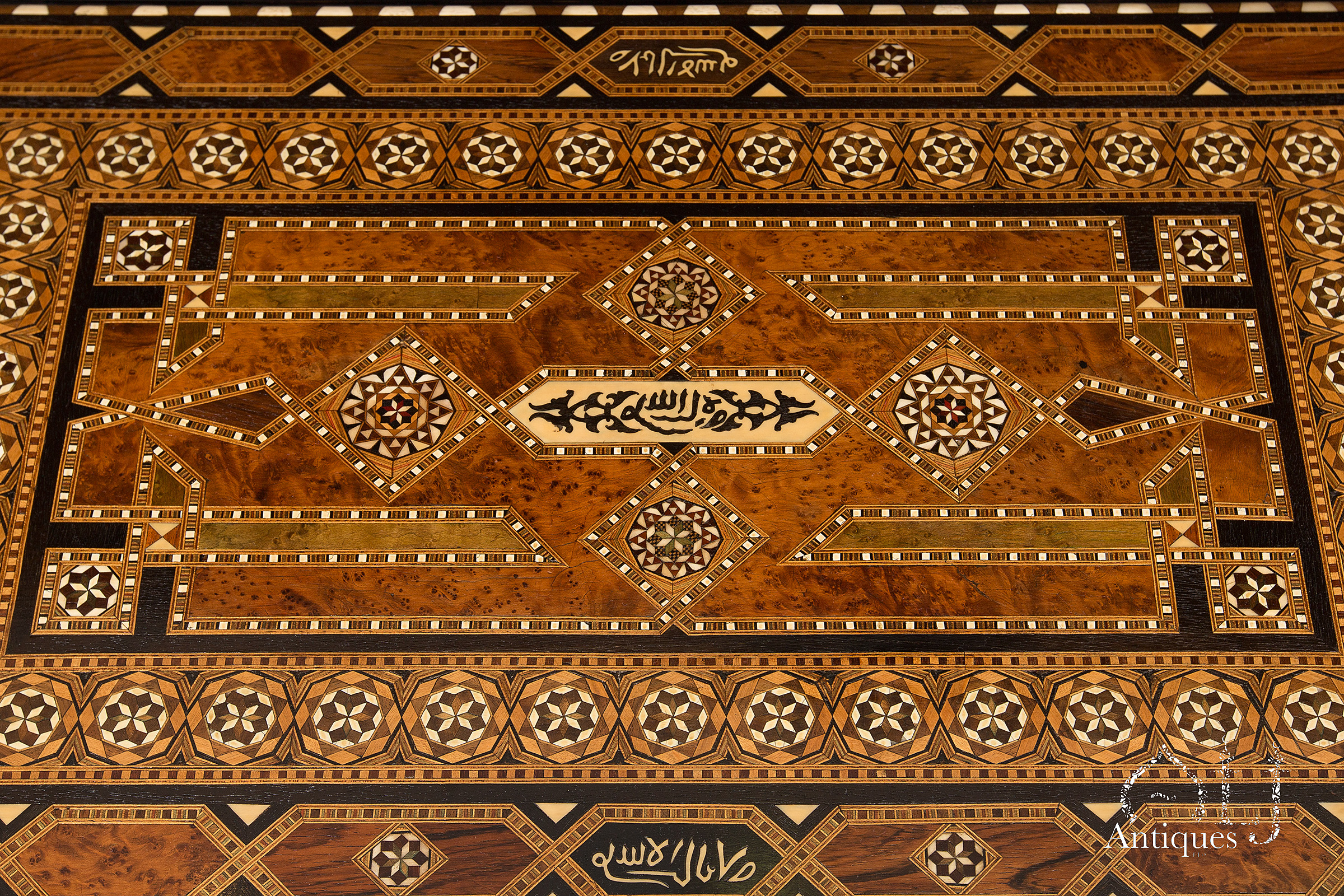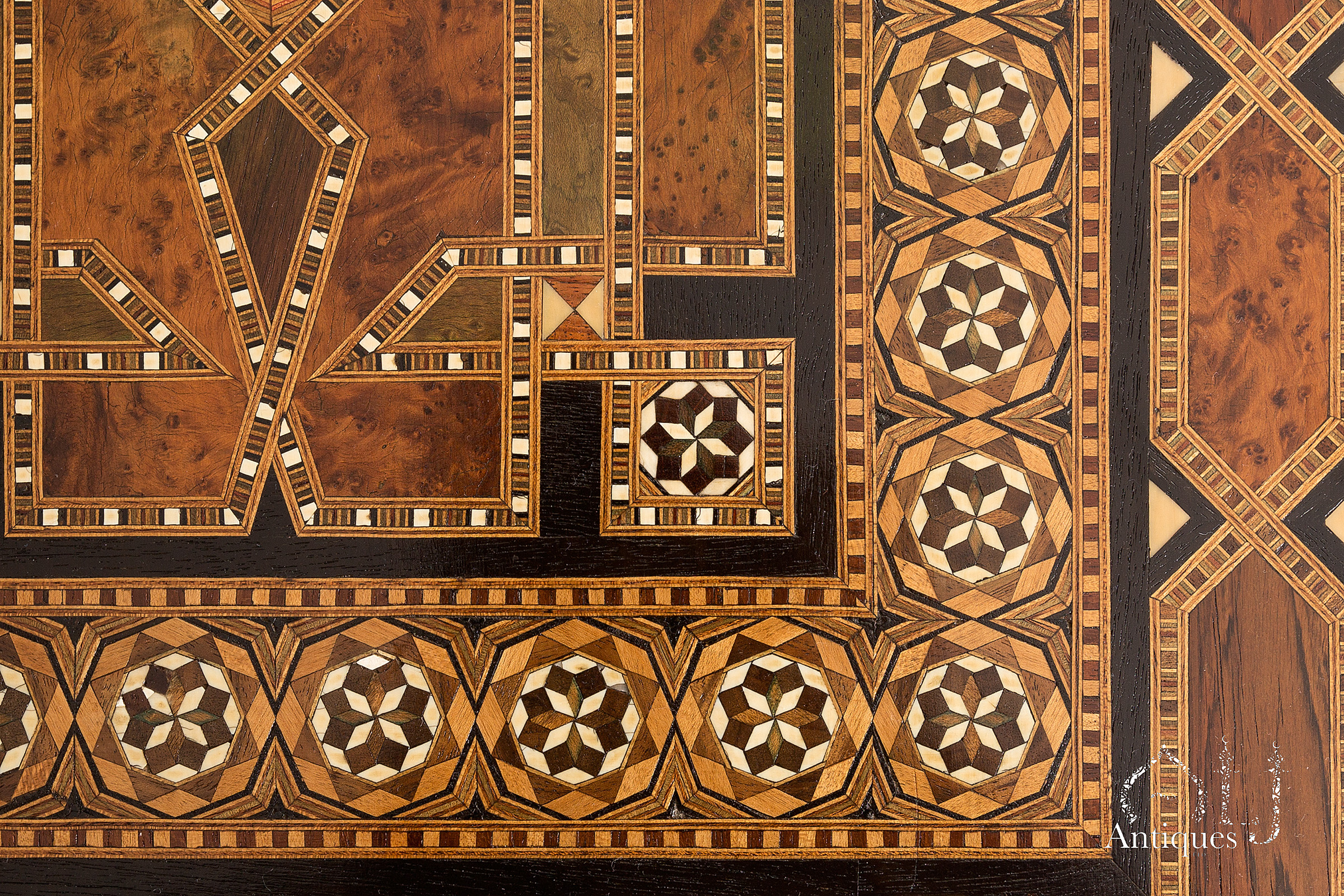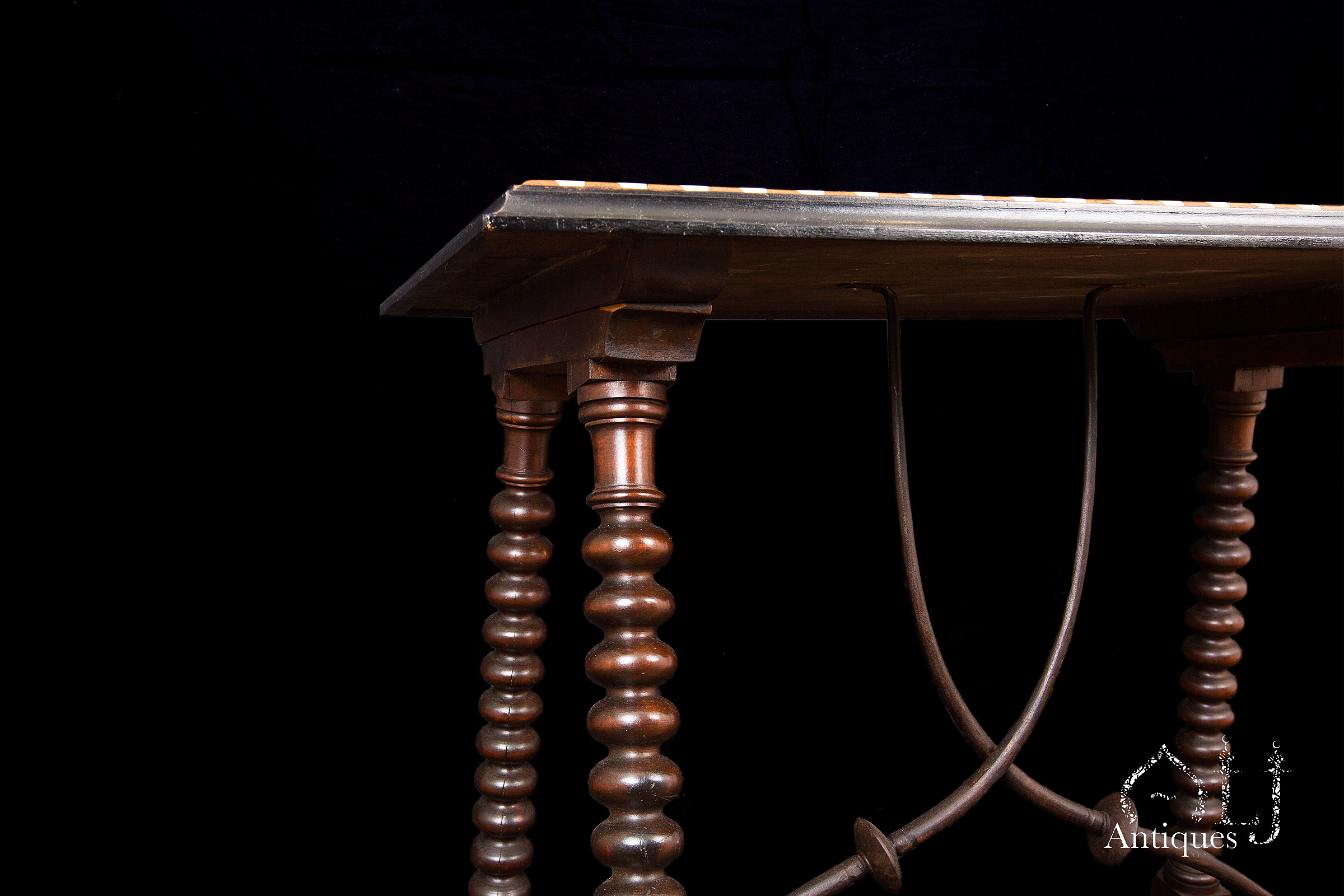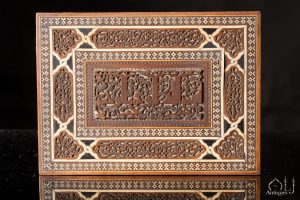Description
Our current lot is yet another revivalist piece and is considered to be a combination of both Andalusian Moorish-Revivalist and a Baroque style walnut side Fratino console table with bobbin turned legs and iron stretcher, the tabletop is inlaid with marquetry woodwork, bone, ivory & celluloid decorated with Alhambra Place motives.
The walnut tabletop is of a rectangular shape decorated with various inlay marquetry woodwork, bone, ivory and celluloid which was originally invented in the 1860s and it was produced by mixing nitrocellulose, camphor and to create certain colour its usually mixed with certain dyes and is considered to be the first type of synthetic plastic material that was originally used in the film manufacturing and to replicate the ivory and was stopped from being used in 1950.
The overall inlay motives used are replicating the use of the Andalusian ornamentation inlay marquetry techniques found on the furniture, household items and some other wood-based structures during the Muslim Califate Umayyad reign in Al-Andalus of Spain, the origin of the wooden inlay technique is derived from the Arabic word Tarsi ( (ترصيع or inlay to the ornamentation of pieces of furniture with various chosen pre-shaped materials which usually were cut and reshaped of various geometrical designs by cutting and gluing various materials such as aloe, sandalwood, ebony, boxwood, died and natural coloured thin cut pieces of bone and ivory also metal inlay was occasionally used.
The main workshops of the Moorish artisans of such carpentry-based industry were based in many Andalusian cities mainly in the city of Cordoba.
this technique was carried on in Granada and other Andalusian cities even after the fall of the most prominent 15th. century Moorish Nasrid Dynasty palace of Alhambra in Andalusia-Spain.
The visible exterior part of the wooden table top is inlaid with a geometrical parquetry woodwork decoration including a very little percentage of thin cut pieces of bone, ivory and celluloid surrounded by plain veneers of walnut and ebony.
The borders are inlaid with trapezoid form of alternating finely cut pieces of bone and walnut.
The main theme used in the decoration is a central rectangular section edged with two larger intertwined frames, the overall decoration consists of various geometrical motives, the exterior frame is decorated with elongated hexagonal forms outlined with ribbons of woodwork beadings the centre is veneered with plain walnut and four of which the centre is decorated with square shapes and the eight-pointed star motive also with additional four encountered decoration of alternating ebony with celluloid or ivory to represent the Nasird dynasty emblem which is an Arabic inscription to the motto of “La Ghalib Ila-Allah” or
لا غالب إلا الله) ) translating to there is no conqueror but God.
The smaller frame located in the middle is solely decorated with a series of similar patterns of intertwined eight-pointed stars outlined by a halo of small rhombus shaped of thin cut pieces of celluloid, the stars are separated by half cut of confronted four-pointed stars,
The central rectangular shape part is decorated with various geometrical motives the centre is with a celluloid cartouche bearing the Nasird dynasty emblem which is an Arabic inscription made with ebony to the motto of “La Ghalib Ila-Allah” translating to there is no conqueror but God surrounded by arabesque motives.
The emblem is surrounded by additional geometrical motives mainly with larger intertwined eight-pointed stars with other various geometrical cartouches and smaller stellar motives located on each corner.
The table top is erected on four long bobbin turned legs and supported by two hand forged Iron Stretcher.
Registration of an item with ivory content: Submission reference: XV5UAKKW

